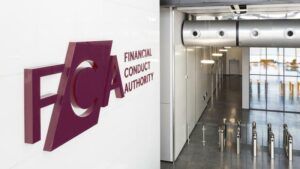Completely excluding carbon-producing companies in portfolios is not sustainable, according to a panel.
Speaking at Alfi’s Global Distribution conference in Luxembourg this week, Lombard Odier Investment Managers head of ESG solutions, Robert de Guigné said the UN sustainable development goal of keep global temperature rise below two degree celsius could not be achieved with renewables alone.
“You could reduce your carbon footprint in a straight forward way by excluding the energy material and utilities companies in a portfolio but is this a really smart way to do it?” he said.
“To transition to the two degree target we will still need some oil and some gas to be able to produce electricity – we can’t switch to renewables like that.”
de Guigné said that selectors and investors could instead favour firms in all sectors that had the best practices on carbon emissions.
“Your investment strategies need to go through this smart way and not just get rid of the most emitting and tick the [environment, social, and governance] box. There’s a lot of temptation to tick the box in the sustainable field,” he said.
European Commission taxonomy
The panel discussed the European Commission’s project towards creating a criteria to determine if an economic activity is environmentally sustainable and de Guigné noted that if it was too simple it would become a box ticking exercise.
“Or firms will see it as an opportunity to sell more products. In our particular industry we have a very large sensitivity to benchmarking and we use it to hire and fire people,” he said.
“And if you’re just sticking to benchmarks and ticking the box where is your responsibility? You’re just delegating all the methodology, all the thinking around sustainability to someone else.
“The European Commission has a big chapter on ESG benchmarks and indices which will be very interesting to see.”
Also speaking on the panel, State Street Global Advisors head of equity portfolio strategies and indexing, Ana Harris said that the industry needed to move to self-regulate ESG disclosure.
“If we don’t do it then the regulators will force us to do it but they might overshoot and frameworks can become a bit too narrow,” she said.
“But I’ve heard that the European Commission are looking for opinions, they aren’t doing it locked away in a room. They are talking to the industry, practitioners, asset owners and need time to develop the taxonomy to protect the consumer.
“At the same time to a certain extent there is freedom right now for investment managers to incorporate it in their own way into their investment beliefs.”
Difference between box ticking and ESG integration
Harris told ESG Clarity’s sister publication Expert Investor that while certain investors and asset houses treated incorporated ESG as a box ticking exercise, this was changing.
“As more evidence of impact grows we can also convert a few of those sceptics but the majority of people are slowly but surely understanding the benefits of ESG in the long term,” she said.
Harris said when selecting ESG funds, buyers should looking at the track record of ESG improvement by going beyond the labels attached to the fund, look at the resources that a particular asset manager was putting behind ESG and whether it was a focus of the firm or just an add-on, and to look at the thought leadership surrounding the topic.
– This article first appeared on ESG Clarity’s sister site Expert Investor.








